 Ever since I was young, I always wondered if our Gurus actually looked like the depiction in the photo frames hung up in the walls of our home. In this research piece, our esteemed guest author, Rishpal Singh Ji investigates and makes a startling discovery with ample references about photos, pictures, art and images of our Gurus. Are they real? Where do they come from? Who painted them?… and so on.
Ever since I was young, I always wondered if our Gurus actually looked like the depiction in the photo frames hung up in the walls of our home. In this research piece, our esteemed guest author, Rishpal Singh Ji investigates and makes a startling discovery with ample references about photos, pictures, art and images of our Gurus. Are they real? Where do they come from? Who painted them?… and so on.
Do artists’ sketch drawings and paintings of our Sikh Gurus allegedly done during their lifetimes really exist? If so, how real are they and has their authenticity been established and independently verified by art historians beyond any reasonable doubt?
Sikh scholar, the late Dr.Trilochan Singh travelled throughout India and Pakistan in 1957-1959 to do research on the lives of Guru Nanak and Guru Tegh Bahadur and claimed to have discovered a painting of Guru Tegh Bahadur in 1958 and published this painting in his book Guru Tegh Bahadur: Prophet and Martyr (A biography).1 The frontispiece of his book bears a replication of this painting.
There are conflicting dates of Guru Nanak’s travels to Arab countries. However, sufficient evidence exists that Guru Nanak visited Baghdad and a painting of him was allegedly done by Persian miniaturist painter Kamal-uddin Behzad (c. 1455/60 – 1535) of Baghdad.
Our Sikh Gurus could easily have commissioned paintings of themselves during their lifetimes, but they did not do so as this is contrary to the philosophy of the Sikh faith and goes against the very essence of Sikh teachings. Sikhism considers the worship of paintings and illustrations of our Sikh Gurus as ‘manmat ’ (contrary to our Sikh faith). It begs the question of how it is possible to give a human form to God, especially to our Gurus who never once themselves claimed to be a God.
Yet, we have counter-intuitively ended up creating such paintings as objects for deification. What is the power of such paintings? Of all the paintings of the Sikh Gurus, S. Sobha Singh’s paintings are the most well-known and likely to be found in most Sikh homes, some langar halls, and possibly even in the darbar sahib of some gurdwaras around the world.
Sobha Singh’s work has tended to focus exclusively on the faces of our Gurus and in the mind’s eye, his paintings of Guru Nanak, Guru Arjan Dev, and Guru Gobind Singh today dominate the global Sikh community’s perception of these three Gurus.
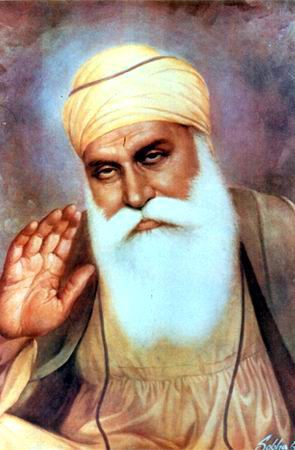
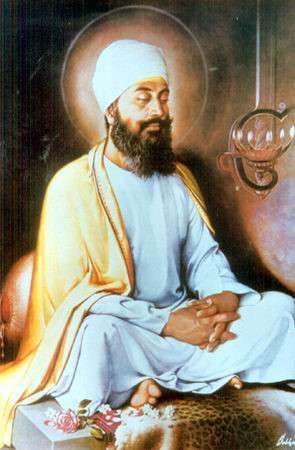
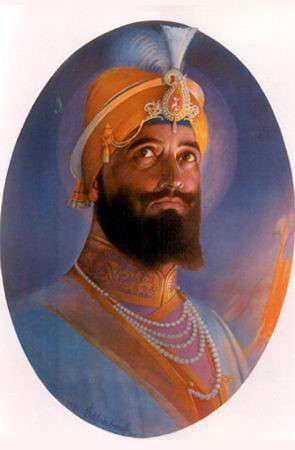
Paintings of our Sikh Gurus by S. Sobha Singh (Source: http://www.sobhasinghartist.com)
Concerned with the proliferation of varying images of Guru Nanak and the Sikh Gurus that came after him, the then SGPC Publications Secretary wrote to renown Sikh scholar Prof. Sahib Singh on 4 January 1951 to seek his views on their proposal for uniform representative images of the Sikh Gurus.
These depictions were essentially at the whims of the various artists. He proffered that these artists be invited to take account of which features to consider in their depictions and to submit their visual representations for an SGPC panel to moderate on a unform image of the Sikh Gurus.
In his considered reply, Prof. Sahib Singh, while commending the SGPC for raising this important matter, expressed dismay at the SGPC’s willingness to even consider the acceptance of this imagery. He reproached that such consideration would be a retrogressive step in the Sikh faith and questioned how such images would be used in homes alongside other non-religious photos. Rather, he strongly advocated display and acceptance of the Guru’s shabad in homes, and drew particular attention to Bhai Gurdas Ji’s Vaar 24 pauri 11.2
ਗੁਰ ਮੂਰਤਿ ਗੁਰੁ ਸਬਦੁ ਹੈ ਸਾਧਸੰਗਤਿ ਮਿਲਿ ਅੰਮ੍ਰਿਤ ਵੇਲਾ।
Gur Murat Gur Shabd Hai Sadhsangat Mil Amrit Vela |
(ਵਾਰਾਂ ਭਾਈ ਗੁਰਦਾਸ : ਵਾਰ ੨੪ ਪਉੜੀ ੧੧ ਪੰ. ੩)
The SGPC has not been entirely consistent in its approach and deliberation on this important matter. Harinder Singh Sikka produced the Punjabi film Nanak Shah Fakir based on the life of Guru Nanak and it was first screened at the Cannes Film Festival in 2014.
The SPGPC initially applauded the film for making the younger generation aware of Sikh history, and later changed its mind following objections from some quarters, declaring that the picturisation of Guru Nanak in human form is against Sikhi.
The film was then modified in compliance with the demands of the SGPC and Guru Nanak’s character, originally played by actor Harish Khanna, was converted to animation. The film was subsequently released for screening in India on 13 April 2018.
Not unlike the Sikh faith, many Muslims believe that the depiction of images of prophet Muhammad can give rise to idolatry, where an image rather than the divine being it symbolises, can become the object of worship and veneration.
A 1976 epic film titled The Message and also known as Mohammad, Messenger of God attracted controversy, and a light bulb on the camera was used during the scenes of characters with prophet Muhammad to represent his immanence.
Islamic tradition or Hadiths strictly prohibits images of Allah, Prophet Muhammad, and all other prophets of the Christian and Jewish traditions. Chapter 42, Verse 11 of the Koran signifies that “Allah is the originator of the heavens and the earth and there is nothing like a likeness of Him.” 3
It appears that Sunni and Shia Muslims differ on this issue because these two branches of Islam ascribe to different Hadith collections. Shia scholars have taken a more liberal view, suggesting that it is permissible to depict Muhammad on TV or movies if done with respect.
In the Christian and Buddhist faiths, there are no known contemporary images of Jesus and Buddha from their lifetimes, and they were never once depicted in human form. As with Sobha Singh’s paintings of our Sikh Gurus, some of the best-known depictions of Jesus Christ today are from Leonardo da Vinci’s “Last Supper” to Michael Angelo’s “Last Judgment” in the Sistine Chapel.
Of late, the portrayal of Jesus as a white European man has come under renewed scrutiny during this period of introspection over the legacy of racism in society.4
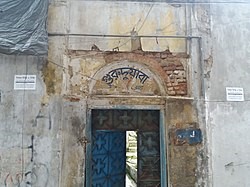 In his research, Dr. Trilochan Singh records that Guru Tegh Bahadur visited Eastern India sometime between 1666-1668 and stayed in Dhaka from December 1666 to May 1667.
In his research, Dr. Trilochan Singh records that Guru Tegh Bahadur visited Eastern India sometime between 1666-1668 and stayed in Dhaka from December 1666 to May 1667.
The sangat in Dhaka had a dharamsal specially built for Guru Tegh Bahadur’s stay. This building is more than 350 years old now and sadly, lies abandoned in Dhaka, Bangladesh.
It is alleged that just before leaving Dhaka, Guru Tegh Bahadur consented to a request by the mother of Bhai Bulaki Das (masand of the Sikh sangat in Dhaka at the time of Guru Tegh Bahadur’s visit) to have his portrait painted by Ahsan, the Royal Painter of Shashta Khan, the Governor of Bengal in 1668AD, so as to have a glimpse of the Guru’s divine personality.
It has been reported that “the painter successfully painted every detail of Guru Tegh Bahadur’s body and dress on the canvas, but that he could not paint the face of the Guru for his portrait as the resplendence of the Guru’s face dazzled his eyes. Ultimately Guru Tegh Bahadur (himself) gave finishing touches to the self-portrait by preparing his face with the brush of the painter.” 5
This historical fact is said to have been recorded by Sarup Das Bhalla, a descendant of Guru Amar Das in Mehima Prekash (1773 AD) and Kavi Santokh Singh in his Suraj Prakash (1842 AD).6
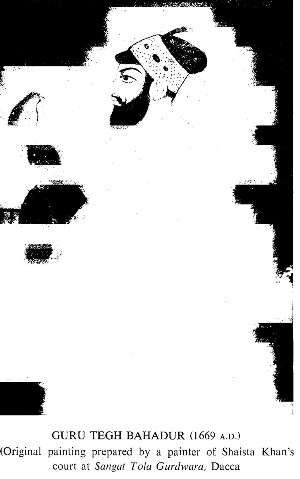
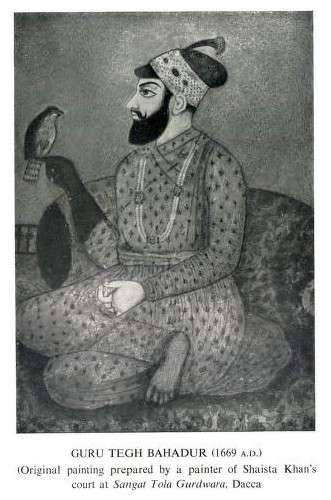
Dr. Trilochan Singh “discovered’’ this painting in 1958 and published it in his book together with photographs of other relics of this period.
He further noted that the original painting was handed over to the Victoria Memorial Museum in Calcutta (now Kolkata) and is said to have “been badly mauled” by the authorities and is now no longer on display.
Dr. Trilochan Singh dedicated his book to his son Anurag Singh, erstwhile Director of the Sikh Itihas Board in 2008.
Bhai Anurag Singh claims to have the original of a contemporary painting of Guru Gobind Singh (reproduced below) at the age of ten in his personal library, and has drawn comparison to the likeness in the eyes, turban, and postures of Guru Tegh Bahadur and his son (image reproduced below).7

Some controversy exists regarding the number of udasis undertaken by Guru Nanak during his lifetime and before settling in Kartarpur in 1522. Guru Nanak was in Baghdad from November 1519 to January 1520. It is claimed that Kamal-uddin Behzad made a painting of Guru Nanak when he was returning from Haz on his way accompanying Jiwan Qazi of Uch (in Multan Division), and that this painting was brought to Multan in 1521.
The present whereabouts of this painting, if indeed it does really exist, remains a mystery. Kamal-uddin Behzad also known as Kamal al-din Bihzad or Kamaleddin Behzād (c.1455/60-1535) was a miniaturist Persian painter and head of the royal ateliers during the late Timurid and early Safavid Persian periods, and he used paint, ink, and gold for his illuminations.
Five miniatures he contributed to a manuscript of Saʿdī’s Būstān, copied in 1488 are now preserved in the Egyptian National Library at Cairo. Strangely enough, the alleged painting of Guru Nanak does not bear mention in a listing of his 37 artworks. This really begs the question if he indeed did do a painting of Guru Nanak.
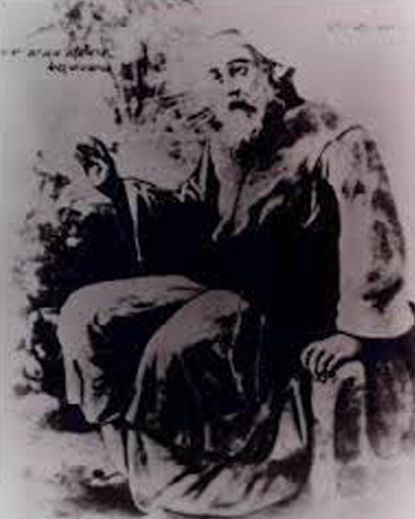
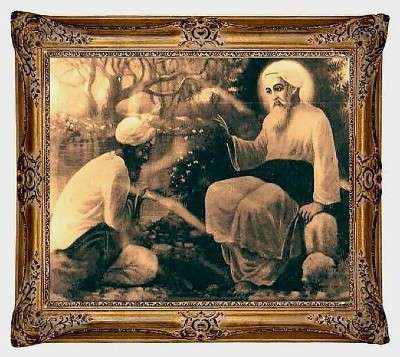

Sikhism is the world’s fifth largest and youngest religion and probably has the greatest number of existing artefacts associated with our Sikh Gurus, and clearly, man-made paintings of our Sikh Gurus does not count among them.
Carbon-14 scientific dating can be used for dating organic materials such as canvas, wood, and paper with an 80 years range of accuracy.8 It would be interesting to see if the ‘badly mauled’ alleged painting of Guru Tegh Bahadur currently held at the Victoria Memorial Museum in Calcutta stands this test of authenticity as does the alleged painting of his 10 years old son Guru Gobind Singh currently held in Bhai Anurag Singh’s personal collection.
None of our Sikh Gurus claimed to be Gods or descended from God. It is unlikely that any of them would have commissioned or agreed to have paintings made of themselves. Such purported paintings or images that have appeared on the Internet have not really authoritatively been verified as genuine.
Information about paintings and images of our Gurus has surfaced on many blogs, and on the Internet, and has not really been rigorously tested for authenticity by Sikh scholars or historians, let alone tested by scientific dating. There is no quality assurance when it comes to posting information on the Internet and anyone can post anything these days.
Finding it difficult to fasten their thoughts on the invisible, intangible beings, men, at the beginning probably sought to aid their worship by selecting some object (or painting) to represent the being worshipped. This object was not to be in and for itself, but simply as an aid to devotion, representing the being worshipped.9
Grewal (2009) asserted that “the mortal mind cannot comprehend the immanence and transcendence of the nameless, formless, infinite, unfathomable, and incomprehensive version of Akal Purkh.10 The final word on this subject must surely belong to eminent Sikh scholar Prof. Sahib Singh for advocating the acceptance and display of the Guru’s shabad in our homes in preference to unverified depicted images of our Sikh Gurus.
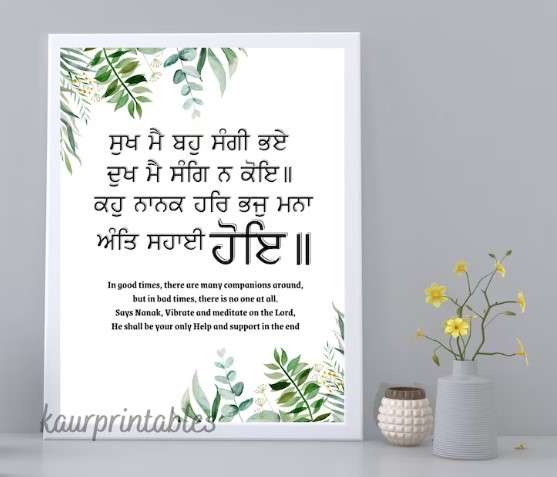
With the vast resources at its command, it behoves the SGPC as the peak body on Sikhi matters to thoroughly investigate the purported existence and authenticity of the images of our Sikh Gurus and finally and firmly put this matter at rest.
References
- Singh, T. 1965. Guru Tegh Bahadur: Prophet and Martyr (A biography). Delhi Sikh Gurdwara Parbhandak Committee.
- This writer’s paraphrasing of a video clip by Daas Harjit Singh discussing the then SGPC Publication Secretary’s letter to Prof. Sahib Singh and his reply to the SGPC.
- BBC News, 4 October, 2021. Why does depicting the Prophet Muhammad cause offence?
- House, A.S. July 22, 2020. The long history of how Jesus came to resemble a white European. https://sc.edu/uofsc/posts/2020/07/conversation_white_jesus.php
- Historicity of Guru Tegh Bahadur’s painting. https://www.sikhnet.com/news/historicity-guru-tegh-bahadurs-painting
- Ibid
- Ibid
- https://www.artexpertswebsite.com:authentication
- Dobbins, F. False Gods or the idol worship of the world. Whitefish, Montana, United States, Kessinger Publishing, 2001, pp.57-58 (Facsimile reprint, first published 1881?).



